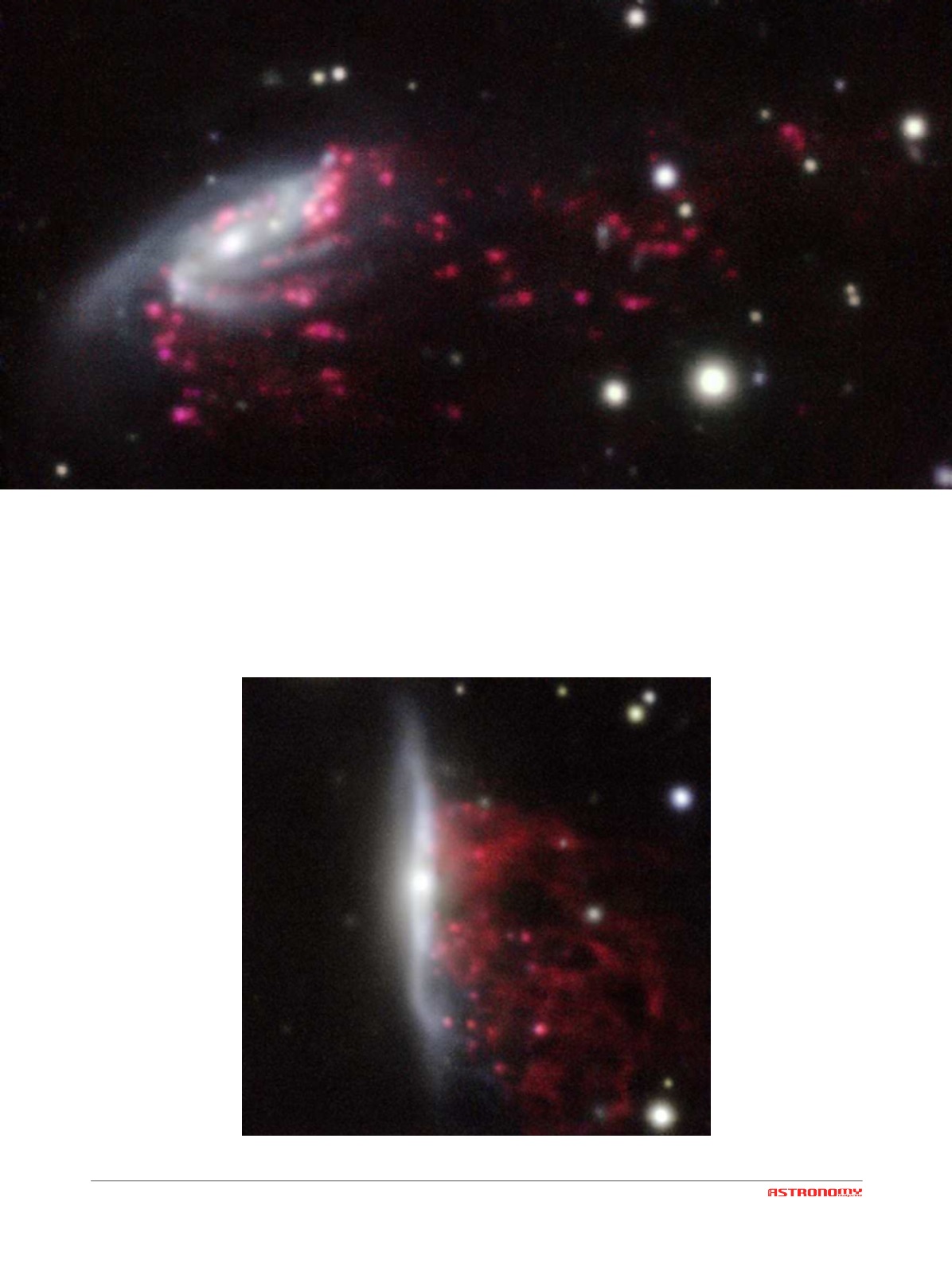

SEPTEMBER-OCTOBER 2017
!
Galaxy JW206
tions suggest a novel mechanism for
gas to be funnelled towards the
black hole’s neighbourhood. This re-
sult is important because it provides
a new piece in the puzzle of the
poorly understood connections be-
tween supermassive black holes and
their host galaxies.”
The current observations are part of
a much more extensive study of
many more jellyfish
galaxies that is cur-
rently in progress.
“This survey, when
completed, will re-
veal how many, and
which, gas-rich gal-
axies entering clus-
ters go through a
period of increased
activity
at
their
cores,”
concludes
Poggianti.
“A long-
standing puzzle in
astronomy has been
to understand how
galaxies form and
change in our ex-
panding and evolv-
ing Universe. Jelly-
fish galaxies are a
key to understand-
ing galaxy evolution
as they are galaxies
caught in the middle
of a dramatic trans-
formation.”
centres of galaxies are active. Super-
massive black holes are present in
almost all galaxies, so why are only
a few accreting matter and shining
brightly? These results reveal a pre-
viously unknown mechanism by
which the black holes can be fed.
Yara Jaffé, an ESO fellow who con-
tributed to the paper explains the
significance:
“These MUSE observa-
dicted and has never been reported
before,”
said team leader Bianca
Poggianti from the INAF-Astronom-
ical Observatory of Padova in Italy.
“It seems that the central black hole
is being fed because some of the
gas, rather than being removed,
reaches the galaxy centre.”
The team also investigated the al-
ternative explanation that the cen-
tral AGN activity
contributes to strip-
ping gas from the
galaxies, but consid-
ered it less likely.
Inside the galaxy
cluster, the jellyfish
galaxies are located
in a zone where the
hot, dense gas of
the
intergalactic
medium is particu-
larly likely to create
the galaxy’s long
tentacles, reducing
the possibility that
they are created by
AGN activity. There
is therefore stronger
evidence that ram
pressure triggers the
AGN and not vice
versa. A long-stand-
ing question is why
only a small fraction
of
supermassive
black holes at the
Galaxy JW100
















